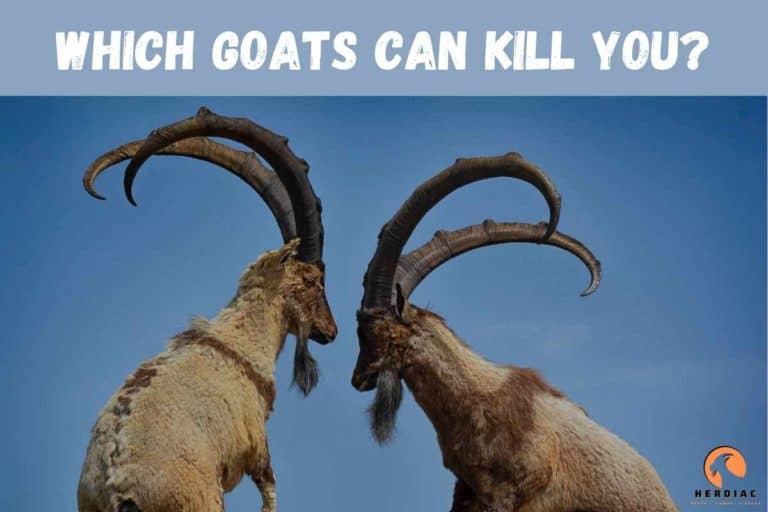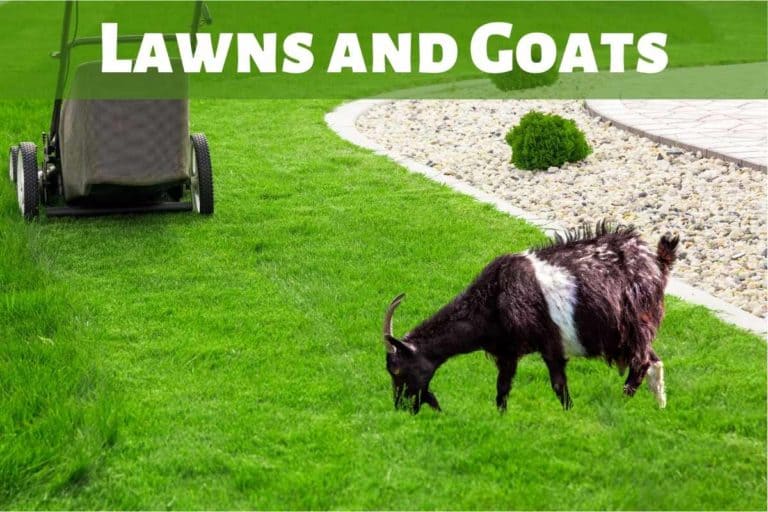Beards on Goats: Which Goats Have Beards and Why?
Have you ever wondered about which goats have bears (and why)? Along with their often majestic horns, beards on goats are one of their most identifiable and recognizable features in many cases.
However, not all goats actually have beards, despite what traditional depictions of goats might have you believe. With this in mind, today, we’re looking to dispel the common misconceptions surrounding beards on goats to help you understand a little more about which goats have beards and why.
Goat Breeds with Beards
Here is a list of goat breeds that have beards and the various uses for each, from pets, to dairy and meat-producing goats.
| Goat Breeds with Beards | Primary Use |
|---|---|
| Saanen | Dairy |
| Nigerian Dwarf | Milk & Pets |
| Anglo Nubian | Dairy |
| Jamnapari | Milk, Meat & Show |
| Angora | Mohair |
| Pygmy Goat | Pets |
| Anatolian Black Goat | Meat & Milk |
| Toggenburg | Dairy |
| Kiko | Meat |
| Changthangi | Cashmere |
| Boer Goats | Meat |
| Kalahari Red | Meat |
| Spanish Goat | Meat |
Beards on Goats: What Are They?
Beards on goats are more than just a funny facial accessory! Male and female goats have beards, and these can serve several different purposes.
However, at their simplest, the beard on a male goat is mainly used as a tool for mating, in a similar manner to how peacock males grow an extravagant tail to woo the ladies – it’s effectively a status symbol, and serves to indicate to the ladies a buck’s success.

Both wild goats’ and domesticated goat’s beards will usually become longer, larger, and fuller with age, similarly to goat horns; together, these make for a striking display piece for attracting mates.
Goat Beards and The Importance in Breeding
In addition, in a rather unpleasant display that often comes as quite a shock to new goat owners, goat beards serve a second purpose in the goat mating game. They’re not just there for looks!
In fact, a male goat’s beard also gives off a very strong odor during the breeding season, for which the female goat simply goes wild as they find it extremely appealing.

How does it do this? In the crudest description possible, he urinates on his legs and facial hair, and the stale goat’s pee develops a powerful stench pretty quickly. It’s definitely not the most pleasant – so if you ever see a male goat (usually called a billy or buck) with a yellowed beard, probably best to wear gloves!
And if you see a guy in a bar with a yellow goatee beard, you know to steer clear!
Wether Goats will have Smaller Beards
A wether goat has less need for a beard as an attraction device for females, as wether goats have less desire for females for obvious reasons. As a result, a wether goat will grow a less impressive beard than a counterpart who remains in possession of certain body parts.
At What Age Do Goats Grow Beards?

A goat’s beard will begin to grow from a very early age reaching full growth at around 2 to 3 years of age. As the goat grows older still, the beard will thicken to provide the very best display for potential female mates.
What Else Could Goat Beards Be For?
As well as being a tool for attracting the ladies, there may also be a secondary use for beards in goats (which may explain why some female goats also have beards).
As suggested by Animal Hair HQ, a goat’s beard may actually provide ever so slightly more protection against harsh environmental conditions and plants.

Feral goats, for example, often have pretty impressive beards, and these may potentially provide a little further insulation when sleeping.
Plus, goats are browsers by nature and will often end up right in the middle of a thick gorse bush or the like – so having a beard in the way could help provide a little more protection around the base of the throat.
Which Goats Have Beards (and Which Don’t)?
At this point, we’ve clarified what beards are on goats and why they might be there (although this still isn’t wholly understood). But which goats have beards?
Well, the simple answer here is: that most goats have beards. Almost all male goats will have a beard. But if we begin getting more specific than that, it can be a little complex.
Female goats grow beards too.
Not all female goats have beards, but many nannies and does will have beards. In fact, the vast majority of pet and dairy goat females have beards; only a handful of goat breeds don’t have bearded females, such as the Boer and Savannah goats (both of which originated in South Africa).

Many Indian goat breeds also lack beards, such as the Beetal; these often seem to make up for it with luxuriously long ears, instead! With that being said, many goat breeders will trim their does’ or nannies’ beards to make them look a little more feminine.
Just Don’t ask!
Most goat breeds have beards.
Most goat breeds usually have beards, and in almost every scenario, the beard of a billy or buck will usually be longer and thicker than that of a wether goat (castrated male), nanny, or doe.
However, relative to their body size, pygmy goats, Kiko goats, and golden guernsey goats often have exceptionally long beards! Still, this always varies from goat to goat; the final beard length and shape will also depend on age, sexual maturity, crossbreeding history, and the like.
Do Pygmy Goats Get Beards?

Pygmy goats of both sexes will grow beards, and to accompany their straight hair, they grow beards that are thicker on males and lighter and more whispy on females. In both cases, the density of the coat and beard will fluctuate with the seasons.
Do Nigerian Dwarf Goats Grow Beards?

Nigerian Dwarf Goats grow beards in both sexes, male and female, developing to full maturity, length, and thickness by the age of three years. A weathered Nigerian Dwarf goat will grow less of a beard and more slowly.
Why Do Mountain Goats Have Beards?

Mountain goats have beards for two reasons, as an impressive display for attracting female goats in mating season, and to go along with their long warm coats as cold protection, which may be slightly shed along with the coat in summer months.
Final Thoughts
When we think of a goat, we usually think of creatures with simply fabulous beards and massive horns.
However, as with every species, there’s a huge amount of variation between different animals. As such, while most goats have beards, it’s not entirely correct that beards on goats are a guarantee.
Even among bearded breeds, there can be a huge variation; for example, Boer goat bucks can potentially get extreme dewlap growth in place of a beard, and vice versa.
Meanwhile, a doe’s beard may be massive in dairy goats, or it could be just a few wisps on the bottom of her jaw!
Hopefully, this guide will give you a little more to think about beards on goats and which goats have beards.

Charlotte Riggs
A passionate owner and breeder of Boer Goats, Charlotte is ensconced in daily goat farm life at Himmon Boer Goats in the UK. A member of the British Boer Goat Society, she spends her spare time also involved with goats. You could say, and she would admit, she is somewhat obsessed!


